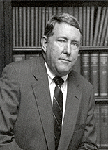-
- About the New York Fed
- What We Do
- Communities We Serve
-
More About Us
-
At the New York Fed, our mission is to make the U.S. economy stronger and the financial system more stable for all segments of society. We do this by executing monetary policy, providing financial services, supervising banks and conducting research and providing expertise on issues that impact the nation and communities we serve.

The New York Innovation Center bridges the worlds of finance, technology, and innovation and generates insights into high-value central bank-related opportunities.

Do you have a request for information and records? Learn how to submit it.

Learn about the history of the New York Fed and central banking in the United States through articles, speeches, photos and video.
-
- Markets & Policy Implementation
-
- Reference Rates
- Effective Federal Funds Rate
- Overnight Bank Funding Rate
- Secured Overnight Financing Rate
- SOFR Averages & Index
- Broad General Collateral Rate
- Tri-Party General Collateral Rate
- Desk Operations
- Treasury Securities
- Agency Mortgage-Backed Securities
- Repos
- Reverse Repos
- Securities Lending
- Central Bank Liquidity Swaps
- System Open Market Account Holdings
- Primary Dealer Statistics
- Historical Transaction Data
-
- Monetary Policy Implementation
- Treasury Securities
- Agency Mortgage-Backed Securities
- Agency Commercial Mortgage-Backed Securities
- Agency Debt Securities
- Repos & Reverse Repos
- Securities Lending
- Discount Window
- Treasury Debt Auctions & Buybacks
as Fiscal Agent - INTERNATIONAL MARKET OPERATIONS
- Foreign Exchange
- Foreign Reserves Management
- Central Bank Swap Arrangements
- ACROSS MARKETS
-
- Economic Research
- U.S. Economy
- Consumer Expectations & Behavior
- Growth & Inflation
- Economic Heterogeneity Indicators (EHIs)
- Multivariate Core Trend Inflation
- New York Fed DSGE Model
- New York Fed Staff Nowcast
- R-star: Natural Rate of Interest
- Labor Market
- Financial Stability
- Corporate Bond Market Distress Index
- Losses from Natural Disasters
- Outlook-at-Risk
- Treasury Term Premia
- Yield Curve as a Leading Indicator
- Banking
- RESEARCHERS
-
- Financial Institution Supervision
- Bank Applications
-
As part of our core mission, we supervise and regulate financial institutions in the Second District. Our primary objective is to maintain a safe and competitive U.S. and global banking system.

The Governance & Culture Reform hub is designed to foster discussion about corporate governance and the reform of culture and behavior in the financial services industry.

Need to file a report with the New York Fed? Here are all of the forms, instructions and other information related to regulatory and statistical reporting in one spot.

The New York Fed works to protect consumers as well as provides information and resources on how to avoid and report specific scams.
-
- Financial Services & Infrastructure
-
The Federal Reserve Bank of New York works to promote sound and well-functioning financial systems and markets through its provision of industry and payment services, advancement of infrastructure reform in key markets and training and educational support to international institutions.

The New York Innovation Center bridges the worlds of finance, technology, and innovation and generates insights into high-value central bank-related opportunities.

The growing role of nonbank financial institutions, or NBFIs, in U.S. financial markets is a transformational trend with implications for monetary policy and financial stability.

The New York Fed offers the Central Banking Seminar and several specialized courses for central bankers and financial supervisors.
-
- Community Development & Education
-
- Staff
-
Fed System Initiatives
- Other Community Development Work
- Calendar
-
 E. Gerald Corrigan, a veteran of the Federal Reserve System, became chief executive officer of the New York Fed and vice chairman of the FOMC on January 1, 1985 at the age of 43. E. Gerald Corrigan, a veteran of the Federal Reserve System, became chief executive officer of the New York Fed and vice chairman of the FOMC on January 1, 1985 at the age of 43. Prior to his appointment, Mr. Corrigan was president of the Minneapolis Federal Reserve Bank for four and a half years. Mr. Corrigan was born in June 1941 in Waterbury, Connecticut. He earned a bachelor of social sciences degree in economics from Fairfield University, Fairfield, Connecticut in 1963. He received a master of arts degree in 1965 and a doctor of philosophy degree in 1971, both in economics, from Fordham University. His career at the New York Fed began in 1968 when he joined the domestic research division as an economist, after teaching at Fordham University in 1967-68. From 1968 to 1979 he served in a variety of staff and official positions including vice president for planning and domestic open market operations. In August 1979, he went on leave from the Bank to become special assistant to Federal Reserve Board Chairman Paul Volcker in Washington, DC. While there, he was named chairman of the Basle Committee on Banking Supervision by the governors of the central banks of the Group of Ten countries. The Committee provides a forum for regular cooperation among its member countries on banking supervisory matters. Mr. Corrigan was instrumental in establishing, and also served as co-chairman of, the Russian-American Banking Forum. This organization was set up in June 1992 to assist Russia in the development of its banking and financial system infrastructure. After nearly 25 years of service in the Federal Reserve System, Mr. Corrigan stepped down as president of the New York Fed on July 19, 1993. In July 1993, President Clinton appointed Mr. Corrigan to head the newly established Russian-American Enterprise Fund. |


